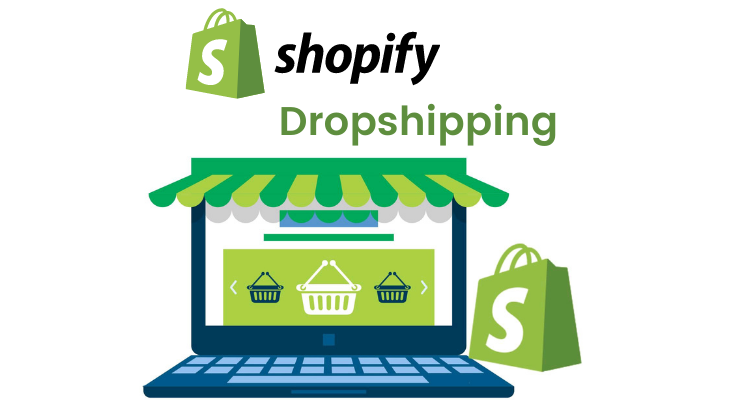Introduction
Shopify dropshipping has become one of the most popular ways to start an online business, especially for beginners. With minimal upfront investment and no need to hold inventory, it’s an attractive option for entrepreneurs who want to launch dropshipping Shopify stores without major risks. Shopify, being one of the most user-friendly platforms, has made it even easier to set up a drop shipping Shopify business. In this guide, we’ll walk you through everything you need to know about Shopify and dropshipping—from how it works to step-by-step instructions and solutions to common challenges.
What Is Shopify Dropshipping?
Dropshipping is a retail fulfillment method where you, the store owner, don’t keep products in stock. Instead, when a customer places an order, you purchase the product from a third-party supplier, who then ships it directly to the customer. Shopify provides the storefront and tools to make this process seamless, while apps like DSers or Spocket connect you with suppliers, including AliExpress dropshipping Shopify options.
How It Works (Simplified Workflow):
- Customer places an order on your Shopify dropshipping store.
- You forward the order details to your supplier.
- Supplier ships the product directly to your customer.
- You keep the profit (your retail price – supplier cost).
Step-by-Step Guide to Starting a Shopify Dropshipping Store
Step 1: Create Your Shopify Store
- Sign up for a Shopify account.
- Choose a store name and select a plan (you can start with the free trial).
- Pick a professional theme and customize it to fit your brand.
Step 2: Choose Your Niche and Products
- Select a niche you’re interested in (e.g., fitness, beauty, home décor).
- Use tools like Google Trends, TikTok, or product research platforms to identify winning Shopify dropshipping products.
- Focus on products with high demand but relatively low competition.
Step 3: Find Reliable Suppliers
- Use Shopify apps such as DSers (AliExpress dropshipping Shopify), Spocket, or Modalyst.
- Look for suppliers with good ratings, fast shipping, and quality control.
- Always order test products to evaluate quality before selling.
Step 4: Set Up Payments and Shipping
- Enable Shopify Payments or PayPal to accept credit cards and online payments.
- Configure shipping zones and pricing strategies (e.g., free shipping or flat rate).
- Clearly state estimated delivery times on your store to manage customer expectations.
Step 5: Launch and Test Your Store
- Add product descriptions, high-quality images, and clear policies (refunds, shipping, etc.).
- Run a test order to ensure everything works smoothly.
- Start with a soft launch to friends, family, or small test audiences.
Common Challenges and How to Solve Them
- Shipping Delays
- Problem: Customers complain about long delivery times from overseas suppliers.
- Solution: Work with local or regional suppliers, choose faster shipping methods (like ePacket or warehouses in the US/EU), or use print-on-demand alternatives.
- Low Profit Margins
- Problem: Dropshipping can be competitive, and margins may be slim.
- Solution: Increase perceived value by branding, bundle products, or upsell complementary items. Avoid price wars by focusing on customer experience.
- Customer Service Issues
- Problem: Refund requests, shipping complaints, or damaged items.
- Solution: Set up automated FAQ chatbots, create clear policies, and use email automation. Always respond quickly to customer concerns to build trust.
Best Practices for Shopify Dropshipping Success
- Build a Brand, Not Just a Store
- Use a unique logo, consistent color scheme, and professional design.
- Avoid looking like a “copy-paste” dropshipping Shopify store.
- Leverage Social Proof
- Add customer reviews and testimonials.
- Use apps like Loox or Judge.me to showcase authentic feedback.
- Optimize Store Speed and SEO
- Compress images, use lightweight themes, and install SEO apps.
- Ensure your site loads quickly, as slow sites drive customers away.
- Marketing Strategies That Work
- Facebook Ads: Target specific demographics with engaging creatives.
- TikTok Marketing: Use short, viral videos to attract younger audiences.
- Influencer Marketing: Partner with micro-influencers to promote your products.
- Content Marketing: Write blog posts or create YouTube content around your Shopify and dropshipping niche.
- Focus on Retention, Not Just Acquisition
- Use email marketing campaigns to upsell and cross-sell.
- Offer loyalty programs or discounts for repeat customers.
Conclusion
Starting a Shopify dropshipping business may seem overwhelming at first, but with the right approach, it’s one of the most beginner-friendly ways to get into eCommerce. By following a clear step-by-step process—choosing a niche, finding reliable suppliers, setting up your store, and marketing effectively—you can avoid common pitfalls and build a profitable online business. The key is to treat dropshipping not as a get-rich-quick scheme, but as a serious business requiring dedication, branding, and customer care. In 2025 and beyond, Shopify and dropshipping remain a powerful opportunity for aspiring entrepreneurs to start their journey into eCommerce.
Next Steps:
- Sign up for Shopify’s free trial.
- Research at least three Shopify dropshipping products.
- Test your first supplier with sample orders.
- Launch your store and start marketing.
Your eCommerce journey into drop shipping Shopify starts now!


